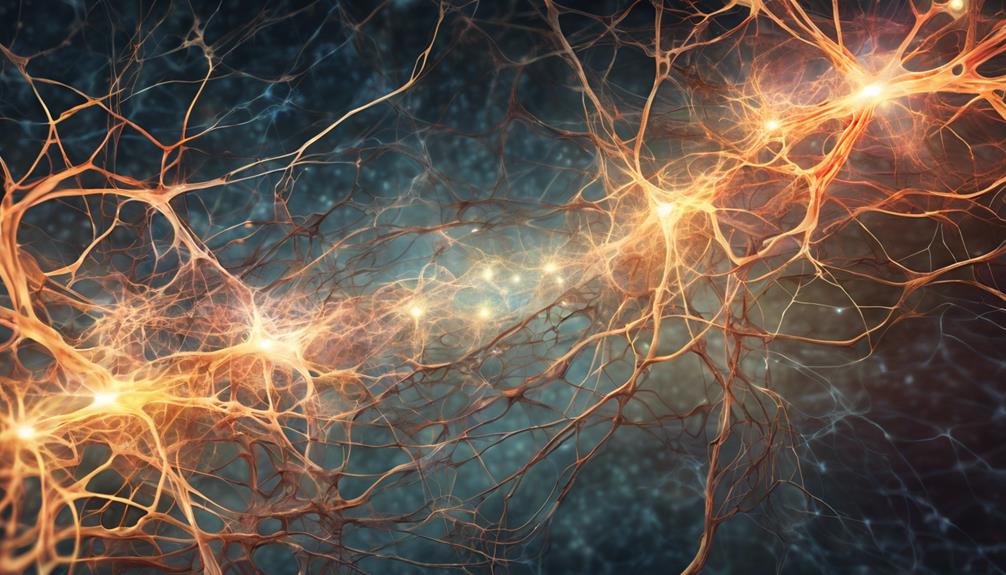Consciousness, a fundamental aspect of human existence, remains an enigmatic phenomenon that continues to elude a precise definition. Despite centuries of contemplation and scientific advancements, the true essence of consciousness remains a perplexing puzzle that intrigues both philosophers and neuroscientists. The intricate interplay between subjective experience and objective reality poses a profound challenge in unraveling the mysteries of consciousness. As we navigate through the complexities of defining consciousness, we are compelled to question the very nature of our existence and the boundaries that separate our awareness from the vast expanse of the unknown.
Key Takeaways
- Consciousness integrates subjective experiences and brain processes.
- Researchers explore neuronal correlates to understand consciousness.
- Philosophical and scientific perspectives shape consciousness studies.
- AI lacks true consciousness despite advancements in artificial intelligence.
The Nature of Consciousness
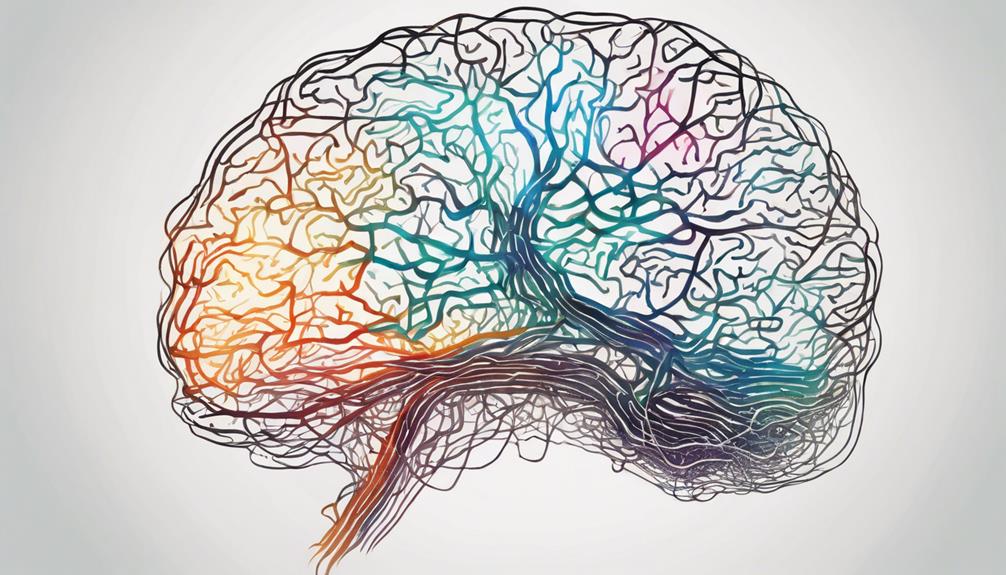
Consciousness, as a fundamental aspect of human experience, encompasses all subjective phenomena and plays a crucial role in shaping our perception of reality. Scientists are actively engaged in unraveling the physical basis of consciousness, delving into the intricate workings of the brain to understand how subjective experiences arise. The brain, with its complex network of neurons and synapses, is believed to be intricately linked to the conscious mind. This connection between the physical brain and the conscious self raises profound questions about the nature of consciousness.
Subjective experiences, such as emotions, thoughts, and sensations, form the essence of consciousness. These qualia, the raw feelings and perceptions that make up our conscious reality, are at the heart of the philosophical and scientific inquiry into consciousness. Scholars acknowledge that consciousness is not just a byproduct of brain activity but a phenomenon that intertwines with the physical processes of the brain. By studying the neuronal correlates of consciousness, researchers aim to gain insights into how our conscious experiences are generated and how they shape our understanding of the world around us.
Defining Consciousness: Philosophical Perspectives
The exploration of philosophical perspectives on defining consciousness reveals a multifaceted discourse influenced by centuries of scholarly inquiry. Philosophers have delved into approximately forty meanings attributed to consciousness, sparking debates on its conceptualization. Influential scholars such as Descartes, Locke, and Kant have left lasting imprints on the understanding of consciousness throughout history. The evolution of consciousness as a concept has transitioned from mere introspection to encompassing awareness of external surroundings and cognitive processes.
Philosophical perspectives on consciousness encompass various angles, including knowledge, intentionality, introspection, and phenomenal experience. The challenge in defining consciousness arises from its complexity and the diverse interpretations surrounding the concept. From ancient philosophical inquiries to modern debates, the essence of consciousness remains a captivating subject of exploration. By examining the views of renowned philosophers and tracing the evolution of thought on consciousness, we gain insight into the intricate tapestry of human consciousness and the ongoing quest to comprehend its nature.
Consciousness in Scientific Inquiry
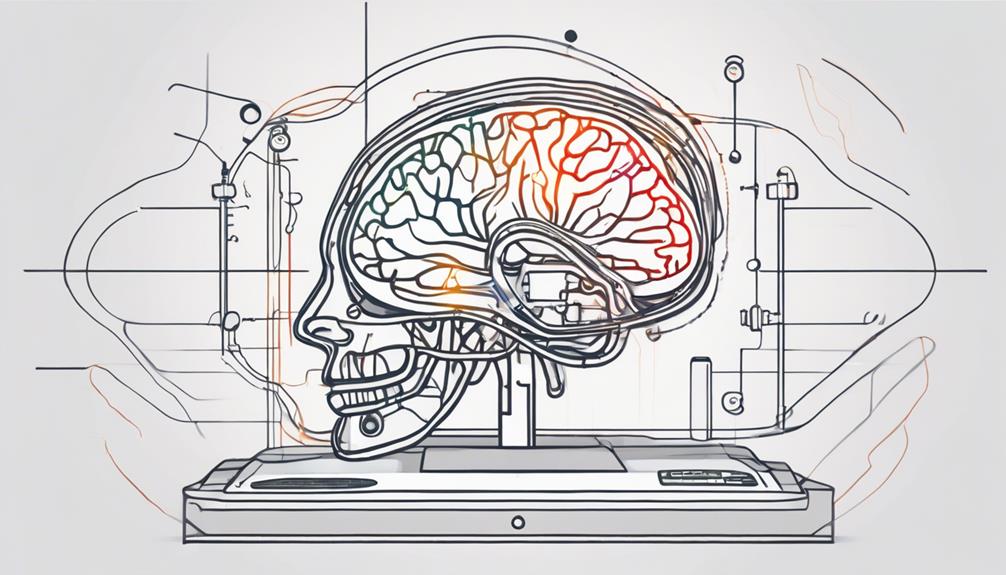
Consciousness in scientific inquiry delves into brain activity and awareness, exploring the neural correlates of consciousness and studying altered states. This area of study aims to bridge the gap between subjective experiences and objective measurements, shedding light on the mechanisms underlying conscious phenomena. By investigating altered states such as meditation or psychedelic experiences, researchers seek to unravel the complexities of consciousness and its neural underpinnings.
Brain Activity and Awareness
Investigating brain activity and awareness is essential in unraveling the intricate relationship between neuronal mechanisms and conscious experiences in scientific inquiry. Neuronal correlates of consciousness (NCC) are fundamental in understanding specific conscious experiences. The cerebral cortex, especially the neocortical tissue, plays a significant role in generating feelings and consciousness. Specific cortical regions, such as the posterior hot zone, are crucial for the conscious perception of sensory stimuli. Although the cerebellum is complex, it is not directly involved in subjective conscious experiences. Scientists are actively working to identify the physical basis of consciousness by studying its neural correlates, aiming to shed light on the mechanisms underlying conscious awareness and how they relate to brain activity.
Neural Correlates of Consciousness
In the realm of scientific inquiry into consciousness, the quest to unveil the neural correlates that underpin conscious experiences stands as a paramount challenge. Brain imaging techniques play a crucial role in consciousness studies, aiding in the identification of neuronal correlates of consciousness (NCC). These NCC are the minimal mechanisms required for a specific conscious experience and are believed to be centered in the cerebral cortex, particularly the neocortical tissue. Specific cortical regions, like the posterior hot zone, are vital for the conscious perception of sensory stimuli, while the spinal cord and cerebellum are not essential for consciousness. Scientists aim to unravel the physical basis of consciousness through studying these neuronal correlates, paving the way for a deeper understanding of the nature of conscious experiences.
| Brain Imaging Techniques | Consciousness Studies | NCC |
|---|---|---|
| MRI | EEG | PFC |
| fMRI | MEG | PPC |
| PET | DTI | ACC |
Studying Altered States
Studying the intricacies of altered states of consciousness provides researchers with valuable insights into the dynamic interplay between brain activity and subjective experiences. By examining neural correlates during altered states such as meditation or under psychedelic influence, scientists can unravel how different patterns of brain activity give rise to diverse subjective experiences. Technologies like EEG and fMRI enable the observation of these changes, shedding light on the neural mechanisms underlying altered consciousness states. These investigations not only deepen our understanding of consciousness but also offer a unique perspective on cognitive processes, emotional regulation, and the therapeutic potential of exploring altered states. Through a rigorous scientific approach, studying altered states of consciousness unveils the complex relationship between brain phenomena and subjective realities.
Neural Correlates and Consciousness
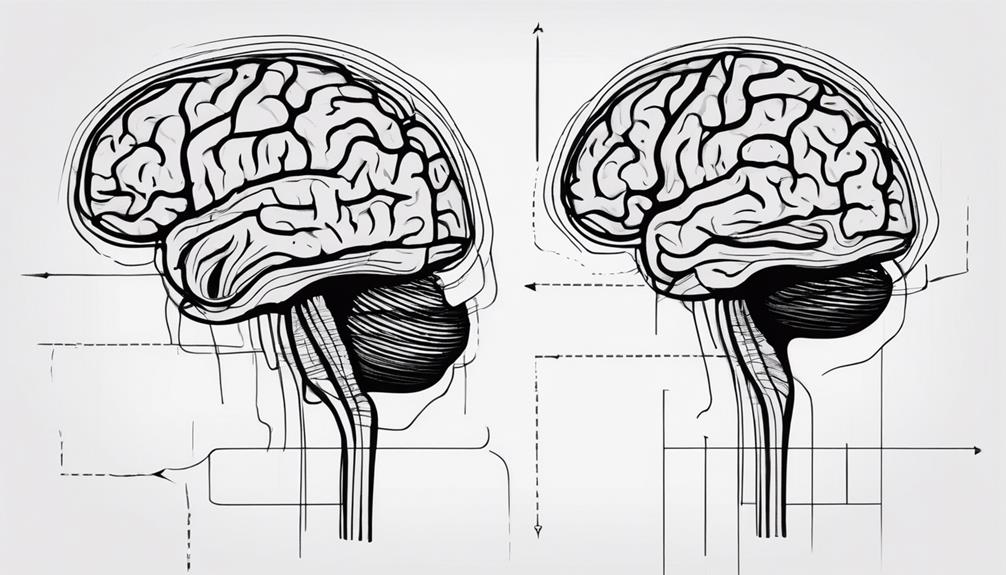
The understanding of consciousness relies on grasping the intricate relationship between brain activity and awareness. Neural pathways intricately connect regions of the brain to shape perception and sensory experiences. Cognitive processes, such as memory and attention, contribute to the unfolding tapestry of consciousness.
Brain Activity and Awareness
Exploring the intricate relationship between brain activity and awareness provides critical insights into the neural correlates of consciousness. Neuronal correlates of consciousness (NCC) represent the fundamental mechanisms necessary for a specific conscious experience to occur. The cerebral cortex, especially the neocortical tissue, is pivotal in the generation of conscious experiences. Specific cortical regions, such as the posterior hot zone, significantly contribute to conscious perception. In contrast, regions like the spinal cord and cerebellum, crucial for bodily functions, do not play a central role in consciousness. Scientists are engaged in the quest to unveil the physical underpinnings of consciousness by studying its neuronal correlates within the intricate network of the brain.
Neural Pathways and Perception
The intricate neural pathways within the brain serve as fundamental conduits for translating sensory stimuli into conscious perceptions, shedding light on the interplay between neuronal functions and awareness. Neuronal correlates of consciousness (NCC) highlight the essential mechanisms underlying specific conscious experiences. The cerebral cortex, particularly the neocortical tissue, is integral to the generation of feelings and consciousness. Specific cortical regions, such as the posterior hot zone, play a crucial role in the conscious perception of sensory stimuli. While the spinal cord and cerebellum have distinct functions related to bodily processes, they are not deemed necessary for consciousness. To comprehend consciousness, it is imperative to explore its physical basis through investigating the neuronal correlates present in the brain.
Cognitive Processes and Consciousness
Investigating the intricate interplay between cognitive processes and consciousness reveals essential neural correlates that underpin conscious experiences. Understanding consciousness involves identifying neuronal correlates of consciousness (NCC) that are fundamental for specific conscious states. The cerebral cortex, particularly the neocortical tissue, is crucial in generating feelings and consciousness. Specific cortical regions, like the posterior hot zone, play a pivotal role in the conscious perception of sensory stimuli. While the spinal cord and cerebellum have distinct functions in bodily processes, they are not indispensable for consciousness. To grasp the complexities of consciousness, it is imperative to recognize the significance of the cerebral cortex in shaping conscious experiences.
Consciousness and the Mind-Body Problem
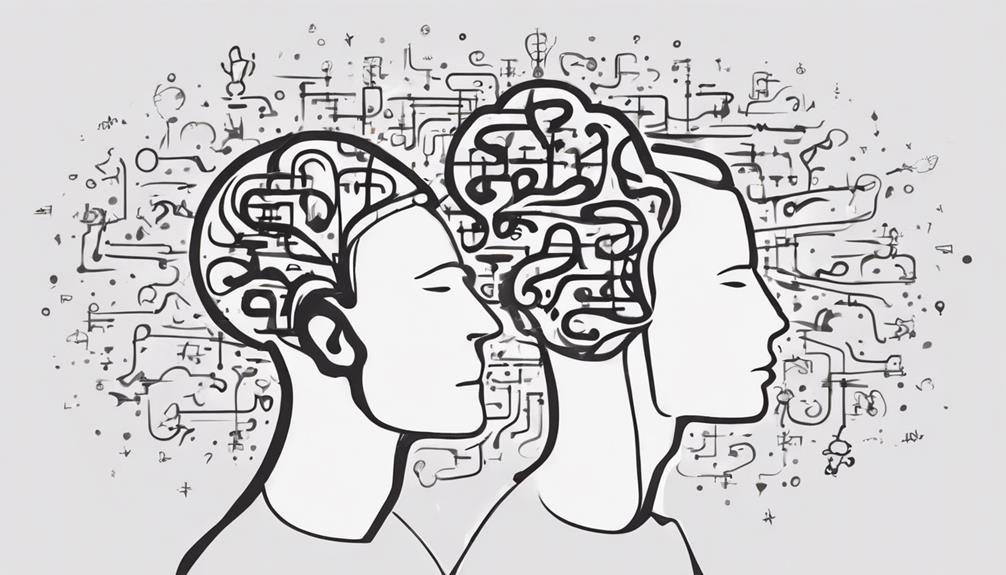
Considering the intricate relationship between consciousness and physical brain processes, the mind-body problem delves into the fundamental question of how these two aspects interact. Philosophers such as Descartes and Leibniz have contributed significantly to this debate, offering different perspectives on the nature of consciousness and its relationship to the body. Dualist views propose that consciousness is separate from the body, while monist perspectives suggest an integration between the two.
In the context of the mind-body problem, understanding consciousness involves grappling with how subjective experiences emerge from neural activities within the brain. This challenge prompts researchers to explore how physical processes within the brain give rise to conscious mental states. The mind-body problem serves as a critical philosophical inquiry that pushes the boundaries of our understanding of consciousness and its connection to the physical world. By addressing this fundamental question, we aim to unravel the mysteries surrounding the nature of consciousness and its embodiment within the human brain.
The Evolution of Consciousness
In exploring the evolution of consciousness, it becomes evident that this gradual process has significantly influenced the development of the human mind over millions of years.
- Early forms of consciousness in simple organisms may have focused on basic survival instincts and responses to the environment.
- As organisms evolved, consciousness likely expanded to include more complex cognitive abilities, such as memory, learning, and social interactions.
- The emergence of self-awareness and introspection in higher animals marked a significant step in the evolution of consciousness.
- Human consciousness is characterized by a sophisticated level of self-awareness, abstract thinking, language, and complex emotional experiences, reflecting a long evolutionary journey.
The evolution of consciousness showcases a progression from rudimentary forms of awareness to the intricate levels of self-reflection and cognitive capabilities observed in humans today. This journey highlights how consciousness has evolved alongside species, shaping not only our understanding of the world but also our place within it.
Altered States of Consciousness

Altered states of consciousness encompass various conditions such as sleep, meditation, hypnosis, and drug-induced experiences, influencing perception, cognition, and self-awareness. These states are characterized by distinct patterns of brain activity compared to normal waking consciousness. During sleep, different stages such as REM and non-REM sleep showcase varying brainwave patterns and neuronal activity, impacting how we perceive the world and process information. Meditation and hypnosis alter neural pathways, leading to shifts in attention, awareness, and cognitive functions. Drug-induced states can disrupt neurotransmitter systems, affecting perception and self-awareness.
Studying altered states of consciousness provides valuable insights into the complex relationship between brain activity, perception, and cognition. By examining these states, researchers can uncover fundamental truths about the nature of consciousness and the mechanisms underlying human experiences. Understanding how altered states influence our mental processes enhances knowledge of the mind-body connection and sheds light on the intricate workings of the brain.
Medical Insights on Consciousness
Medical insights on consciousness are rooted in the meticulous examination of brain activity and its correlation with awareness levels. By scrutinizing brain regions like the cerebral cortex and thalamus, experts aim to elucidate the neural mechanisms behind different states of consciousness. Disorders that disrupt consciousness, such as comas, provide a window into understanding the intricacies of awareness and cognitive function.
Brain Activity and Awareness
Recent advancements in neuroscience have shed light on the intricate relationship between brain activity and conscious awareness, providing valuable insights into the mechanisms underlying human consciousness. Brain imaging techniques such as fMRI and EEG are instrumental in identifying patterns of neural activity associated with consciousness. Gamma band oscillations in the brain have been linked to conscious awareness and the perception of sensory stimuli. The prefrontal cortex, responsible for maintaining awareness and attention, is crucial for consciousness. Moreover, specific neuronal firing patterns in different brain regions correlate with varying states of consciousness, highlighting a neural basis for awareness. Dysfunction in the thalamus, a vital relay center in the brain, can disrupt cortical activity and impair levels of consciousness.
States of Consciousness
The exploration of states of consciousness within the realm of medical insights involves a profound investigation into the varying levels of awareness and responsiveness exhibited by individuals, encompassing conditions such as coma, vegetative state, minimally conscious state, and locked-in syndrome. These states are understood by studying brain activity patterns, providing crucial insights into the underlying neural mechanisms. Coma represents a state of deep unconsciousness where individuals are non-responsive and unable to wake up, typically resulting from severe brain injury. In contrast, the vegetative state entails wakefulness without awareness, while the minimally conscious state exhibits limited but definite signs of consciousness. Locked-in syndrome is a rare condition characterized by complete paralysis, except for eye movements, where individuals remain fully conscious and aware despite their physical limitations.
Neural Correlates of Consciousness
Implicating the cerebral cortex, particularly the neocortical tissue, in the genesis of consciousness reveals a fundamental aspect of neural correlates underlying conscious experiences. Specific cortical regions, such as the posterior hot zone, are crucial for the conscious perception of sensory stimuli. Neuronal correlates of consciousness (NCC) represent the minimal mechanisms necessary for specific conscious experiences, shedding light on the physical basis of consciousness. While the spinal cord and cerebellum play distinct roles in bodily functions, they are not deemed essential for consciousness. Understanding the NCC and the involvement of the cerebral cortex provides valuable insights into the mechanisms that give rise to consciousness and the intricate neural processes that underpin our conscious experiences.
Consciousness Beyond Humans
Exploring the manifestation of consciousness in non-human species reveals a diverse spectrum of awareness and cognitive capacities across the animal kingdom. It is evident from studies on animal behavior, cognitive abilities, and brain structures that consciousness is not exclusive to humans. Observations of animals like dolphins, elephants, and primates demonstrate complex cognitive abilities suggestive of consciousness. This challenges the traditional notion of human exceptionalism and prompts ethical considerations regarding animal welfare and rights.
Research into non-human consciousness underscores the importance of interdisciplinary approaches merging neuroscience, ethology, and philosophy to delve into the nature of subjective experiences in diverse species. By acknowledging consciousness in non-human animals, we broaden our understanding of the cognitive world and foster a more inclusive perspective on sentient beings. This expanded view not only enriches scientific inquiry but also informs ethical practices concerning the treatment and respect of all conscious creatures inhabiting our shared planet.
Consciousness in Children and Animals

In the discourse on consciousness, an intriguing area of study involves examining the developmental stages of awareness in both children and animals.
- Children exhibit signs of consciousness early on, including responsiveness to stimuli and emotional expressions.
- Studies suggest that infants as young as a few months old show self-awareness and recognition of themselves in mirrors.
- Animal consciousness is a topic of debate in the scientific community, with evidence of complex behaviors and emotions in various species.
- Research indicates that animals like dolphins, elephants, and primates display levels of self-awareness and problem-solving skills indicative of consciousness.
Understanding consciousness in children and animals requires a nuanced evaluation of their cognitive capacities and behaviors. Observations of animal behaviors such as empathy, mourning rituals, and tool use provide insights into their potential consciousness. The presence of self-awareness in infants challenges traditional perceptions of consciousness development, highlighting the need for further exploration into the intricacies of awareness across different species.
Consciousness in Artificial Intelligence
Artificial Intelligence's quest for self-awareness and consciousness raises intricate ethical dilemmas surrounding the development of sentient AI entities. The ongoing debate on the nature of AI consciousness delves into the fundamental essence of awareness and cognition within machines. Exploring the implications of creating AI with moral reasoning capabilities prompts critical reflections on the ethical responsibilities entwined with advancing artificial consciousness.
AI and Self-awareness
AI's current state reveals a fundamental absence of true consciousness and self-awareness, rooted in its operation through programmed algorithms rather than subjective experiences. Despite advancements, AI lacks internal awareness and understanding, raising questions about its ability to possess genuine self-awareness. Some key points to consider in this debate include:
- AI systems mimic consciousness through pattern recognition and decision-making.
- The ethical implications of creating seemingly conscious machines are a subject of ongoing discussion.
- The Turing test assesses human-like intelligence but not true consciousness.
- Developing AI with authentic consciousness poses complex ethical, philosophical, and technical challenges, blurring the lines between artificial intelligence and sentient beings.
Ethics in AI
The ongoing discourse on the ethics of artificial intelligence delves deep into the implications of potential consciousness within AI systems and the ethical considerations surrounding their treatment and development. Concerns about the ethical treatment of AI entities stem from the possibility of AI exhibiting signs of consciousness. This raises complex questions about how we should interact with these AI entities, what rights they may have, and what responsibilities come with creating potentially sentient machines. Ethical guidelines and frameworks are being established to navigate these intricate ethical dilemmas. Understanding the ethical implications of AI consciousness is paramount in shaping the future of technology and society. It is essential to establish clear ethical boundaries and principles to guide the responsible development and deployment of AI technologies.
AI Consciousness Debate
In the ongoing debate surrounding consciousness in artificial intelligence, the fundamental question centers on whether AI systems can exhibit subjective experiences akin to human consciousness.
- Critics argue that AI lacks the biological substrates necessary for genuine consciousness.
- Proponents suggest that AI could exhibit behaviors indistinguishable from conscious beings, raising ethical and philosophical concerns.
- The Turing Test is often referenced in discussions about AI consciousness to assess machine intelligence through human-like conversation.
- Research in AI ethics and philosophy delves into the implications of attributing consciousness to artificial entities.
Understanding the Stream of Consciousness
Reflecting the continuous flow of thoughts, feelings, and sensations in an individual's mind, the stream of consciousness embodies the unbroken sequence of mental processes experienced. Popularized by William James, a renowned psychologist and philosopher, the concept delves into the ever-changing and dynamic nature of consciousness. It serves as a lens through which to observe the interconnectedness and fluidity of human cognitive processes. The stream of consciousness captures the essence of the mind's constant activity, showcasing the seamless transition from one thought or feeling to the next. This continuous flow highlights the intricate web of mental processes that shape our perceptions, decisions, and overall experience of reality. By understanding the stream of consciousness, researchers and scholars gain valuable insights into the complexities of human cognition and the mechanisms that underpin our conscious awareness. It is a fundamental aspect of consciousness studies, shedding light on the intricate workings of the human mind.
Spiritual Dimensions of Consciousness

Exploring the spiritual dimensions of consciousness involves probing the intricate relationship between human awareness and elevated states of existence beyond conventional perception. When delving into this realm, practices like meditation, prayer, and mindfulness are often utilized to facilitate a deeper understanding of consciousness. Spiritual traditions and teachings provide valuable insights into the nature of consciousness that surpass mere sensory experiences and rational thought. Central to many spiritual perspectives is the concept of interconnectedness and universal consciousness, suggesting a shared essence that unites all beings. By engaging with the spiritual dimensions of consciousness, individuals may experience profound personal growth, self-realization, and a heightened comprehension of existence. Through these practices, one can transcend the limitations of the physical world and tap into a more profound understanding of the interconnected nature of consciousness.
Theories Explaining Consciousness
Numerous theoretical frameworks have been proposed to elucidate the enigmatic nature of consciousness, each offering unique perspectives on the mechanisms underlying human awareness. Two prominent theories in the realm of understanding consciousness are the Global Neuronal Workspace theory and the Integrated Information Theory (IIT). The Global Neuronal Workspace theory posits that consciousness emerges from the widespread dissemination of information within the brain, allowing for the integration of various cognitive processes. On the other hand, the IIT focuses on the interconnected mechanisms that give rise to consciousness based on fundamental properties of subjective experience. Both theories contribute significantly to the ongoing discourse on consciousness and its underlying mechanisms.
| Theory | Description | Key Contributors |
|---|---|---|
| Global Neuronal Workspace theory | Consciousness originates from broad access to information throughout the brain, facilitating cognitive integration. | Bernard Baars |
| Integrated Information Theory | Focuses on interconnected mechanisms that generate consciousness based on essential properties of subjective experience. | Giulio Tononi, Christof Koch |
These theories, along with others exploring neural correlates of consciousness (NCC), play a pivotal role in advancing our understanding of this complex phenomenon.
Metaphysical and Specific Theories of Consciousness

Metaphysical and specific theories of consciousness delve into the fundamental nature and underlying mechanisms of conscious experiences, offering insights into the enigmatic realm of human awareness. These theories play a crucial role in elucidating the mysteries surrounding consciousness. Here are some key theories in this domain:
- Metaphysical Theories: These theories explore the fundamental nature and origins of conscious experiences beyond the physical realm, contemplating the essence of consciousness itself.
- Global Neuronal Workspace Theory: This specific theory proposes mechanisms for how consciousness arises in the conscious brain, suggesting that widespread brain areas are involved in broadcasting information to create conscious experiences.
- Integrated Information Theory (IIT): IIT emphasizes complex interconnected mechanisms in the brain as foundational for conscious experiences, highlighting the integration of information across neural networks as essential for consciousness.
- Quantum Mind Theories: These theories investigate the potential role of quantum processes in conscious phenomena, aiming to understand consciousness through the lens of quantum mechanics.
Frequently Asked Questions
How Do We Explain Consciousness?
Explaining consciousness involves delving into the mind-body connection, conscious awareness, philosophical debates, and neural correlates. Scientists navigate the intricate terrain of understanding how neural processes give rise to subjective experiences, integrating philosophical inquiries with empirical evidence. The quest to elucidate consciousness persists, with ongoing debates and research shedding light on this complex phenomenon. By exploring the interplay of neural mechanisms and subjective awareness, we inch closer to unraveling the enigma of consciousness.
How Do You Define Human Consciousness?
Human consciousness, a cornerstone of human experience, involves the intricate interplay of personal experiences, neural activity, self-awareness, and philosophical debates. It embodies the essence of awareness and cognition that defines our existence. Exploring the depths of consciousness unveils the mysteries of subjective reality, paving the way for a deeper understanding of ourselves and the world around us. Its complexity mirrors the enigma of life itself, inviting contemplation and scientific inquiry.
What Is Consciousness Best Defined As?
Consciousness, as best defined, is the subjective awareness of one's surroundings and experiences. It encompasses cognitive processes such as perception, reasoning, and emotions, rooted in brain activity. This definition is central to the philosophical debate on the nature of consciousness and aligns with the scientific perspective that links inner experiences to self-awareness. Understanding consciousness is vital for exploring human cognition and the complexities of subjective awareness.
What Is the Best Way to Describe Consciousness?
The best way to describe consciousness involves delving into its subjective experience, awareness level, self-reflection, and cognitive processes. Understanding consciousness is pivotal in comprehending our existence. Subjective experiences shape our reality, while self-reflection enhances our awareness. Cognitive processes like perception and memory contribute to our conscious state. Exploring these facets provides insight into the complex nature of consciousness and its profound impact on human cognition and identity.
Conclusion
In conclusion, consciousness remains a complex and enigmatic phenomenon that continues to intrigue philosophers and scientists alike. Like a vast ocean, it holds depths of mystery and wonder that challenge our understanding of the nature of existence. Through philosophical inquiry and scientific exploration, we strive to unravel the intricacies of consciousness and unlock the secrets of the human mind.
